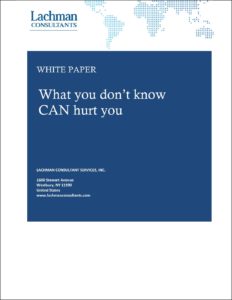The global life sciences market is witnessing an unprecedented pace of change across pharmaceuticals, medical devices, and biologics. It’s the new normal as trends like big data, the Internet of Things, increasing supply chain complexity and the advance of biosimilars create new opportunities – and challenges – for life sciences companies. As regulators around the globe scramble to stay abreast of these trends, they are making important and often major updates to directives. Quite often these directives are not coordinated between markets, creating a patchwork compliance landscape to be navigated.
If you are involved in your company’s quality, regulatory surveillance, compliance, or knowledge management efforts, the following questions are for you:
- Do you have frequent (i.e. at least monthly) conversations with the regulators in the markets where you manufacture AND sell?
- Does your company have the expertise to predict and interpret regulatory directives?
- Do you have reliable methods of disseminating information on the impact of regulatory directives to your clinical operations teams?
- How does your organization remain aware of and respond to GxP actions, import alerts, or other market actions against other companies in your industry?
There is a sustainable strategic advantage to being armed with up-to-date knowledge of changes by regulatory bodies around the globe. By disseminating and integrating these insights, chances are you and your organization will get to market faster and maximize your time in market once there.
Why Regulatory Surveillance is Worth the Effort:
- The cost of reactive regulatory compliance is daunting, erodes credibility with customers and employees, reduces time-to-market and limits future strategic options.
- The risks of non-compliance increase with the distance from market, length of the supply chain, and the number of markets.
- Regulatory missteps in one market raise the concern of agencies in other markets, and therefore scrutiny.
- Investing in staying informed – i.e. regulatory surveillance – is a simple step towards a sustainable strategic advantage of any life sciences company.
Click through below to read the full whitepaper by Lachman Consultants.

